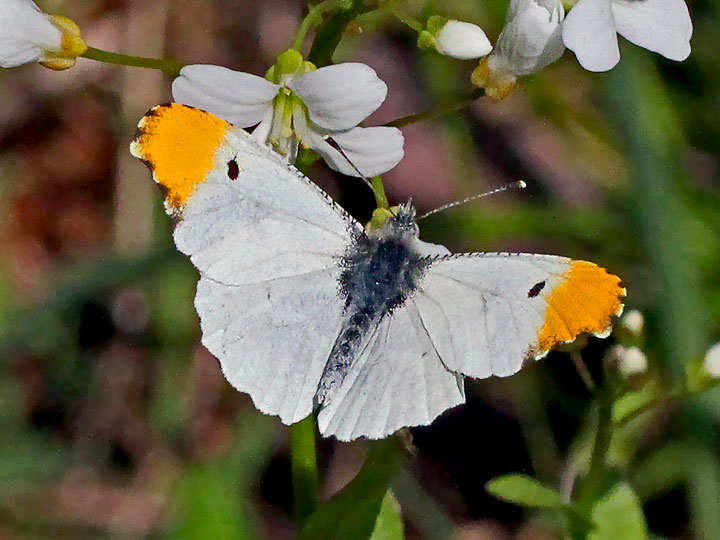
 |
Photos Above © Judy Gallagher, Leesylvania State Park, Woodbridge, VA; April 2012 Left © Gary Myers, Merrimac Farm Wildlife Management Area, Nokesville, VA; May 2011 |
|---|
Falcate Orangetip The Falcate Orangetip belongs to the whites and sulphurs family of butterflies. The name comes from the male who is unmistakable with orange wingtips on his slightly hooked forewings. The female lacks the orange tips, but both have a single black spot on each of their white wings. Considered a harbinger of spring, these small butterflies have only one flight in Northern Virginia, between late March an mid-May. Falcate Orangetips sit with their wings folded, revealing an underwing that is a yellow-green marbled pattern. However, they are almost constantly on the wing. Look for them flying close to the ground in open, wet woodland areas. You are more likely to see the male as he constantly patrols his neighborhood looking for a female. The female lays single yellow-green eggs on the stalks of plants in the mustard family, which turn red when about to hatch. The caterpillar is olive-green, about an inch long, with a yellow stripe down its back and a white stripe that spirals around the length of its body. It is also hairy with short hairs, and it is covered in black dots. The colorfully bedecked caterpillar munches on the flower or buds of the plant rather than its leaves, but also likes to eat smaller larvae that wander into the caterpillar’s patch. Unfortunately, sometimes a Falcate Orangetip will lay eggs on the exotic invasive Garlic Mustard. Alhough a member of the mustard family, host plants for Falcate Orangetips, Garlic Mustard is poisonous to the newly hatched caterpillars, which die after eating the plant. The caterpillar forms a yellow chrysalis that is also covered in black spots. |






